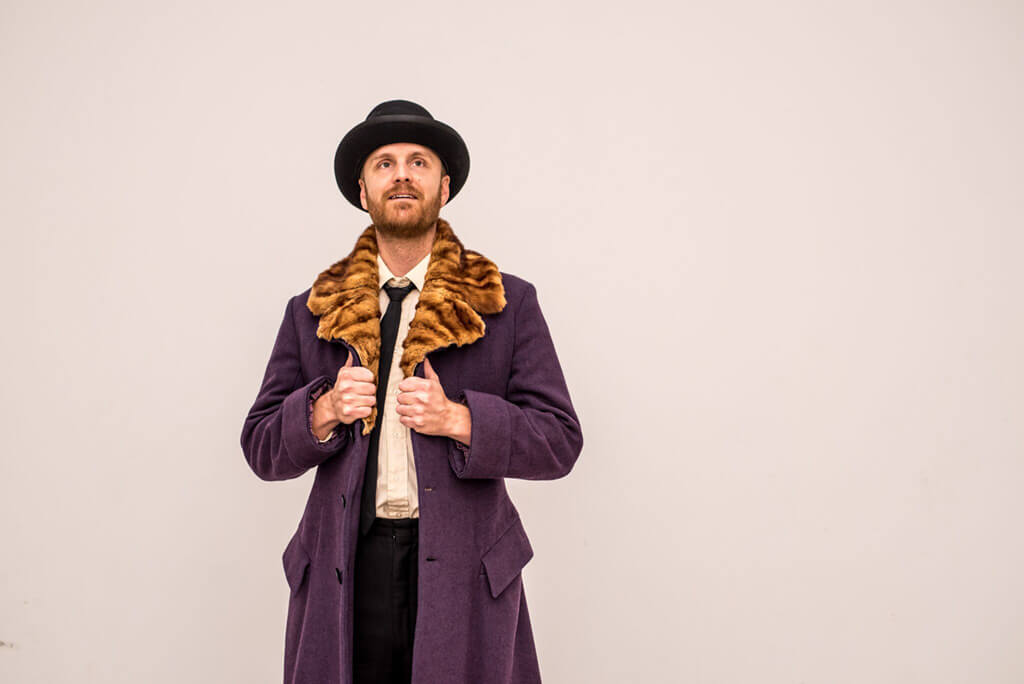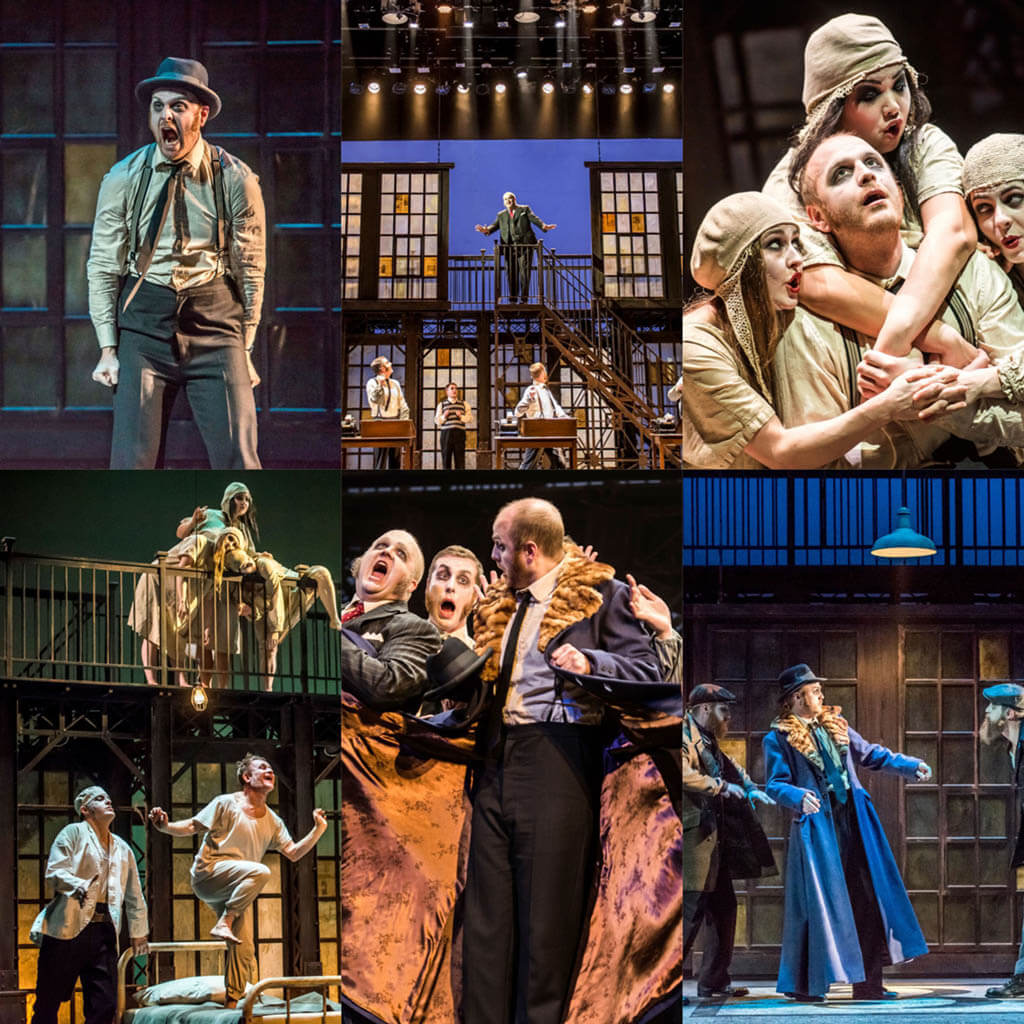
After seeing the dress rehearsal of The Overcoat, it would be hard to deny that it is entertaining. But, I was left wondering, “what exactly is it?”
After interviewing the composer and two performers, the answer to this question became even more elusive because The Overcoat is a combination of theatrical techniques seen in theatre, dance, musical theatre, and opera. Since The Canadian Stage’s mandate is to perform contemporary stage works, the fact that the premiere will occur as a part of their season doesn’t provide a clue to The Overcoat’s genre.
As composer James Rolfe explained, The Overcoat was originally conceived as a short scene in Tapestry Opera’s LibLab where composers and librettists experiment in a short period of time to create segments of potential operas (In fact, the scene created in the LibLab remains almost completely unaltered at the end of Act I when Akaky Akakievitch is measured for his new coat). However, tenor Asitha Tennekoon who has been involved with The Overcoat since its first workshop in 2015, described how the director and librettist Morris Panych “focuses on the movement at an equal level with the singing.” Similarly, baritone Peter McGillivray described Panych’s approach to the staging as “new and weird for all of us.” Both these performers explained that singers are not used to, or even trained to perform movement with the level of specificity that Panych demands. This is not to say that they can’t do so, however as McGillivray says, “it really breaks down the stereotype that opera singers don’t know how to act.”
But given that The Overcoat seems so foreign to its performers, is it still an opera? Perhaps not, since Tennekoon explained to me that Panych describes the production as “genre-bending.” It was intriguing to hear him compare traditional opera with The Overcoat. He noted that unlike opera, in The Overcoat “you don’t always have to be the most important person on stage to do the storytelling.” Rather, “secondary characters have a story to tell all the time” through their movement.
It is possible that the use of movement to create multiple storylines is an influence from Panych’s first attempt to recount Russian author Nikolai Gogol’s comedic tragedy. Twenty years ago, Panych adapted The Overcoat into a movement-and-music piece to tell the story of an unknown bureaucrat who moves up in station simply because he buys a fancy new coat, and then goes insane once it is stolen. Panych, however, claims that this work is completely reconceived.

Having seen the dress rehearsal one is surprised that the music, which McGillivray aptly describes as “facilitating the kinetic energy of piece,” was not written for the sake of physical movement. As Rolfe explained, the music found inspiration from Panych’s libretto, particular his rhythmic language and rhyming scheme. Even once the score was finished and Panych had begun to apply his intricate, almost dance-like, choreography to the work, Rolfe noted there were very few changes made to the score.
When looking at operatic history, it is interesting to note that The Overcoat was not the first of Gogol’s works to be adapted. Like The Overcoat, The Nose is the absurdist story of a man who wakes up one morning to find that his nose has fallen off and run away. Despite its completion by Russian composer Dimitri Shostakovich in 1928, one cannot help but hear the musical parallels between these works. When asked about these similarities, Rolfe explained that Shostakovich’s work still sounds modern because it is provocative and challenges our expectations about what opera is. In contrast, Rolfe thinks his musical treatment of The Overcoat is more lyrical and draws us emotionally into this very human character, Akaky Akakievitch:
Yet if we return to my first observation about what genre The Overcoat falls into, Panych and Rolfe’s work is similarly provocative. With the amount of movement, lyricism, and tunefulness packed into this score, I asked Rolfe where he thought his piece lay in the gray area between opera and musical theatre. Rolfe responded that The Overcoat “has a foot in both camps.” After all, the works of Kurt Weill or Leonard Bernstein are also sung by opera singers, so “you don’t have to take a side,” he explained.
Indeed, upon seeing The Overcoat, one gets a bit of everything. Unlike traditional opera which usually emphasizes the music, here each art form works in unison to propel the drama; you can no longer separate one from the other. As Tennekoon noted, the specificity of the movement means “everything [both music and text] make sense now.” Perhaps, The Overcoat is what opera always aspired to be, a combination of several genres on equal footing. As McGillivray observed at the end of our interview, Toronto attracts new works such as The Overcoat because there is “wonderful creativity in this city. People are becoming less afraid to try.” Starting March 27, we shall see if audiences are willing to.
The Overcoat: A Musical Tailoring can been seen at the Bluma Appel Theatre, 27 Front St. E., March 29 to April 14. For tickets see www.canadianstage.com.



